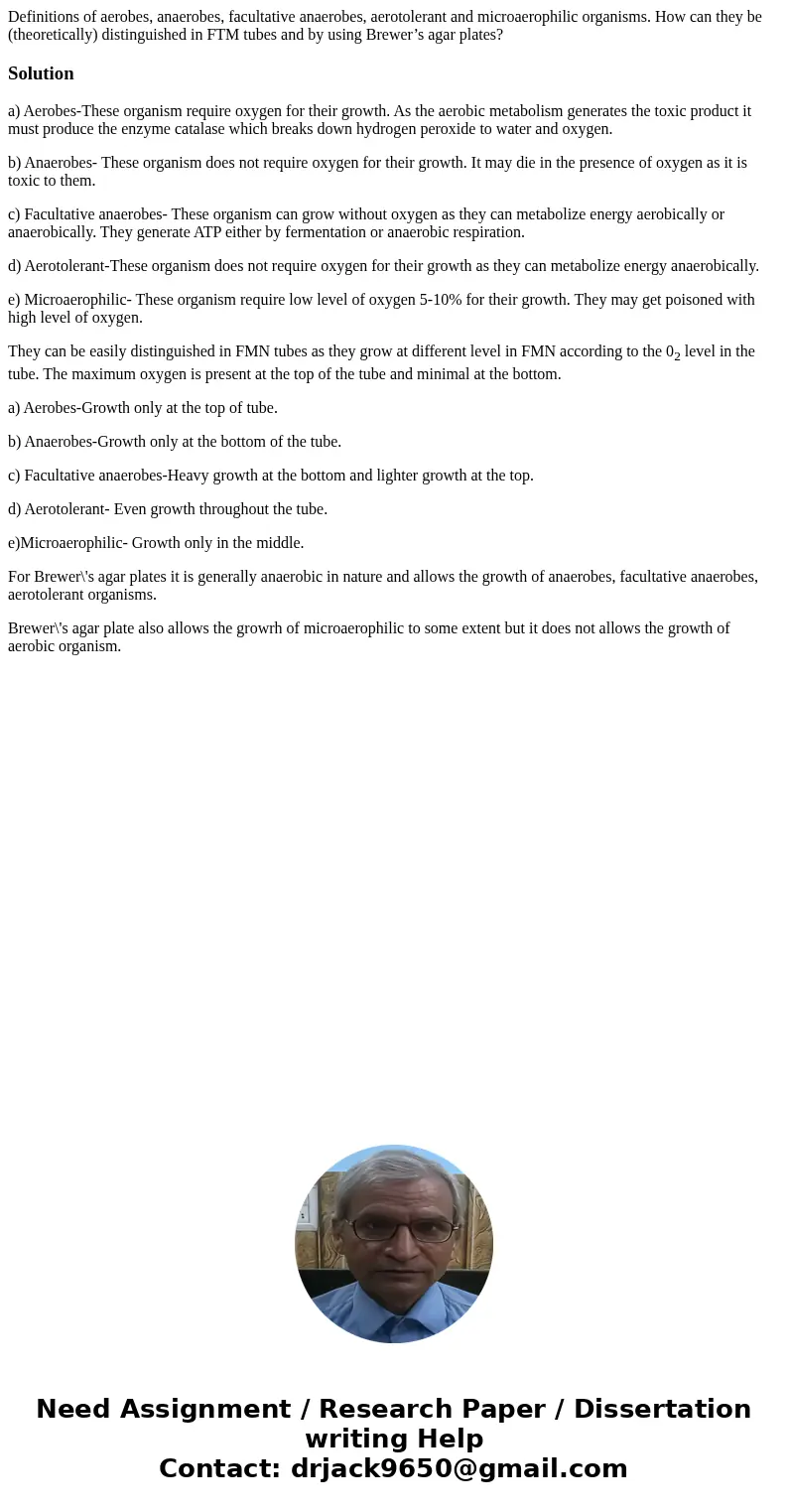Definitions of aerobes anaerobes facultative anaerobes aerot
Definitions of aerobes, anaerobes, facultative anaerobes, aerotolerant and microaerophilic organisms. How can they be (theoretically) distinguished in FTM tubes and by using Brewer’s agar plates?
Solution
a) Aerobes-These organism require oxygen for their growth. As the aerobic metabolism generates the toxic product it must produce the enzyme catalase which breaks down hydrogen peroxide to water and oxygen.
b) Anaerobes- These organism does not require oxygen for their growth. It may die in the presence of oxygen as it is toxic to them.
c) Facultative anaerobes- These organism can grow without oxygen as they can metabolize energy aerobically or anaerobically. They generate ATP either by fermentation or anaerobic respiration.
d) Aerotolerant-These organism does not require oxygen for their growth as they can metabolize energy anaerobically.
e) Microaerophilic- These organism require low level of oxygen 5-10% for their growth. They may get poisoned with high level of oxygen.
They can be easily distinguished in FMN tubes as they grow at different level in FMN according to the 02 level in the tube. The maximum oxygen is present at the top of the tube and minimal at the bottom.
a) Aerobes-Growth only at the top of tube.
b) Anaerobes-Growth only at the bottom of the tube.
c) Facultative anaerobes-Heavy growth at the bottom and lighter growth at the top.
d) Aerotolerant- Even growth throughout the tube.
e)Microaerophilic- Growth only in the middle.
For Brewer\'s agar plates it is generally anaerobic in nature and allows the growth of anaerobes, facultative anaerobes, aerotolerant organisms.
Brewer\'s agar plate also allows the growrh of microaerophilic to some extent but it does not allows the growth of aerobic organism.

 Homework Sourse
Homework Sourse